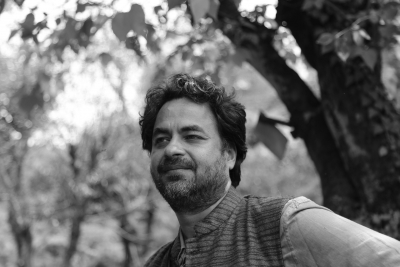By Sukant Deepak
New Delhi, June 24 (IANS) Haunting silences, suppressed rage and to each one — his own darkness. In the three minute trailer of his forthcoming film “Adh Chanani Raat” that filmmaker Gurvinder Singh shows on his laptop, it becomes clear that there is never one story.
Best known for his movies, including his debut work “Anhe Ghore Da Daan” (“Alms for the Blind Horse”) which won three National awards and was premiered at Venice International Film Festival besides “Chauthi Koot” (“The Fourth Direction”) that witnessed its first screening at Cannes Film Festival, Gurvinder, back from Rome after completing the post production of his latest Punjabi film based on Gurdiyal Singh’s novel says that it was during the shooting of the movie in Punjab’s villages that the idea for another movie came about.
“‘Adh Chanani Raat’, a story about land disputes and poverty was being shot in the Malwa belt during November 2019. That is when I saw the fields on fire all around. It was scary… almost impossible to breathe and so depressing. I immediately thought that it made all the sense to make a film that raises this issue in the foreground. Of course, the fires being a metaphor too.”
While all his previous films have been based on literature from the state, the forthcoming one, based on farm fires will reflect his own experiences of living in the region. Originally from Delhi, this FTII pass-out, who spent several years in Himachal Pradesh’s Bir, where he also ran a cafe, shifted near Chandigarh sometime back. “Earlier, the dependence on literature was important because I was neither born nor grew up interacting with the region, and therefore needed a certain understanding and authenticity that literature promised. In all my previous work, I adapted the writer’s lived experience. Now, after many years of travelling to Punjab’s villages and filming and knowing people across the spectrum in the state, I am at a stage where I can translate my own encounters and weave them into stories for a film.”
Adding that post making three movies with the ‘outsider’ perspective, he is now encountering a peculiar mix of urban and rural characters first-hand, also thanks to the semi-urban area he is living in. “The stories I hear from the hinterland, which is a wild space, are shocking. Like that of a young boy who had got a Canadian visa but committed suicide because he couldn’t fly owing to the ongoing pandemic.”
While the lockdown for him has been about painting and planning an exhibition in Delhi and Mumbai that also shows his earlier art works, the filmmaker smiles, “But that will happen only once physical exhibition spaces open. The digital medium is completely incapable of showing the detail and scale of artwork. I would want the people to interact closely with the work, something that just can’t happen over the Internet.”
Admitting that at this stage, it does not really matter to him if his movies hit the festivals, many of which are being cancelled, before being released online, the filmmaker does admit that they hold paramount importance for young filmmakers, “How else do you bring a movie to the notice of public and media? Also, festivals give a certain recognition and stamp, which is important for movie-makers who have just started out.”
Stressing that the Internet has ensured widespread accessibility of independent films, he adds that when the Parallel film movement was at its peak during the 70’s and 80’s, there was hardly any tailor made distribution system for such content and neither special art-house theatres like in Europe and America. “It’s only at film festivals that people could watch them. Today, there is OTT where you can watch at your own pace. Also, it has become virtually impossible to ascertain that a film be seen in a certain way, despite the fact that you spend so much time ascertaining that they have the right sound and colour. See it on 10 different monitors, and there will be varied quality in all outputs. What’s most important is that it reaches the audiences.”
Predicting that in the post-covid scenario when film crews are asking for huge insurances, and travelling will remain a challenge, going hyper local and small will be the way for independent filmmakers, Gurvinder adds, “I have already started taking steps to ensure that all the people I need are locally available and there is no dependence on Mumbai or Delhi for manpower.”
The filmmaker, who is also developing a Hindi movie, does not really expect any state support for independent filmmakers in the near future. “I don’t know if many films have been funded by NFDC after ‘Chauthi Koot’ and ‘Qissa’. Also, why would the state support independent filmmakers when they know that we will critique the government? Though they should be intelligent enough to understand that voter bases don’t shift after watching films.”
Smiling that though the screenplay of Pakistani writer Ali Akbar Natiq’s story “Qaim Deen” is ready, he does not really know when he would be able to shoot in Pakistan. “It is certain that I will not make it here. The scale would be big, with the story taking place over a period of 40 years.”
Pointing that even prominent OTT platforms have started practicing self-censorship and are slowly going mainstream, he adds, “They won’t show a film which can get them into trouble with the government. Also, many of them have now started asking production houses to rope in big and salable names.”
–IANS
Sukant/dpb

